Measurable Sustainable Change – One Community Weekly Progress Update #239
How do we create measurable sustainable change globally? One approach would be measuring implementation of sustainable food, energy, and housing models. One Community is supporting this with open source plans for all three of these areas and also adding open source and sustainable approaches to education, for-profit and non-profit economic design, social architecture, fulfilled living, global stewardship practices, and more. We call all of this living and creating for The Highest Good of All and the goal is a sustainable Earth and the benefits that would provide for all life on it.
- Here’s our project overview
- Here’s our world-change methodology
- Here’s how this becomes self-replicating
- Here’s how we are open source and free-sharing all the do-it-yourself designs
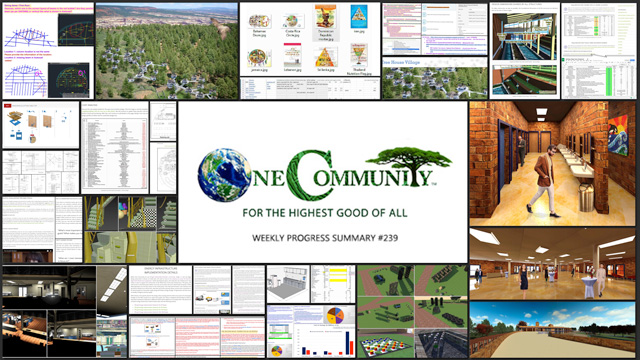
OUR MAIN OPEN SOURCE HUBS
Click on each icon to be taken to the corresponding Highest Good hub page.
One Community’s physical location will forward this movement as the first of many self-replicating teacher/demonstration communities, villages, and cities to be built around the world. This is the October 22, 2017 edition (#239) of our weekly progress update detailing our team’s development and accomplishments:
Measurable Sustainable Change
One Community Progress Update #239
Here is the bullet-point list of this last week’s design and progress discussed in detail in the video above:
MEASURABLE SUSTAINABLE CHANGE INTRO: @0:34
HIGHEST GOOD HOUSING: @6:50
- Continued Sketchup design for the open source outdoor areas of the Recycled Materials Village (see below)
- Finished working on the complete Tree House Village render and header images and updated the website with the finalized versions (see below)
- Continued working on the Murphy bed instructions. Here is one of the new instructional-page examples (see below)
- Began updating the Earthbag Village Tools & Equipment page (see below)
- Sangam Stanczak began the design for the open source web lab that will be used test and assure the safety of the filtered greywater from the Communal Eco-shower (see below)
- Jagannathan Shankar Mahadevan completed his 6th week working on the Straw Bale Village Materials Cost Analysis (see below)
- Dean Scholz continued helping us create quality Cob Village renders (see below)
- Hamilton Mateca finished his 60th week helping with the Compressed Earth Block Village design and render details (see below)
- Dan Alleck completed his 3rd week working on the Compressed Earth Block Village render additions (see below)
- Samantha Robinson completed her 12th week working on the interior design for the living structure of the Tree House Village (see below)
DUPLICABLE CITY CENTER: @9:47
- Began updating the website with the new Highest Good energy rollout details for the landing party of 10-20 people (see below)
- Updated the floor plan images and added the most recent cost analysis details to the open source City Center Kitchen page (see below)
- Falgun Patel completed his 8th week continuing to review, run calculations, and update the specifics of the remote-energy setup plan for the Highest Good energy page (see below)
- Oruba Rabie continued working on the City Center structural engineering AutoCAD and SAP2000 models corrections (see below)
- Jin Yu continued work on the concrete foundation design and tutorial details for the Duplicable City Center (see below)
HIGHEST GOOD FOOD: @11:17
- Continued researching and organizing, and added 10 more countries’ nutrition guidelines to the resources chart for our Food Self-sufficiency Transition Plan and Sustainable Food Nutrition Calculations page (see below)
- Created and added to the Aquapini and Walipini section of the site the two new images that show the shared dimensions of all 6 of these structures (see below)
HIGHEST GOOD EDUCATION: @11:58
- Continued building the education Assessment Format open source page and tutorial (see below)
HIGHEST GOOD SOCIETY: @12:31
- Ashwin Patil and the core team continued with edits and updates to the Highest Good society search engine (see below)
MEASURABLE SUSTAINABLE CHANGE SUMMARY: @13:06
-
-
- How you can most help us right now and how anyone can help
-
CLICK HERE IF YOU’D LIKE TO RECEIVE AN EMAIL EACH WEEK WHEN WE RELEASE A NEW UPDATE
YOU CAN ALSO JOIN US THROUGH SOCIAL MEDIA
ONE COMMUNITY WEEKLY UPDATE DETAILS
HIGHEST GOOD HOUSING PROGRESS
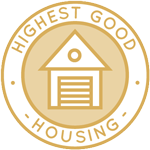 One Community is forwarding measurable sustainable change through Highest Good housing that is artistic and beautiful, more affordable, more space efficient, lasts longer, DIY buildable, and constructed with healthy and sustainable materials:
One Community is forwarding measurable sustainable change through Highest Good housing that is artistic and beautiful, more affordable, more space efficient, lasts longer, DIY buildable, and constructed with healthy and sustainable materials:
-
-
- Learn about: Our Upcoming Crowdfunding Campaign
- Learn about the different village models: 7 Sustainable Village Models
- Visit the open source portals for the first two: Earthbag Village OS Hub | Straw Bale Village OS Hub
-
The core team continued Sketchup design for the open source outdoor areas of the Recycled Materials Village (Pod 6). This week’s focus was continued research and design updates to the outdoor bowling and chess and checkers elements, plus designing an obstacle course with a tire-hop, wobble-log, jumping-stones, tunnel, dodging panels, and low climbing-wall.
In addition, the core team finished working on the complete Tree House Village (Pod 7) render and header images and updated the website with the finalized versions.
Sangam Stanczak (Ph.D. and P.E.) began the design for the open source wet lab that will be used test and assure the safety of the filtered greywater from the Communal Eco-shower. You can see here the layout and initial cost analysis.
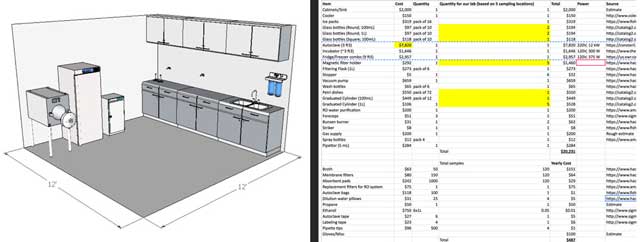
Measurable Sustainable Change – Design of the Open Source Wet Lab to Test Greywater – Click to Visit
Jagannathan Shankar Mahadevan (Mechanical Engineer) completed his 6th week working on the Straw Bale Village Materials Cost Analysis. What you see here are more details and images added to the writeup summary discussing the details, sustainability savings, and final estimate. We’d say we’re now about 95% complete with the full cost analysis for this village.
Dean Scholz (Architectural Designer) continued helping us create quality Cob Village (Pod 3) renders. Here is update 86 of Dean’s work, continuing to test and develop the textures and lighting from the skylights and windows for the central dining and presentation hall.
Hamilton Mateca (AutoCAD and Revit Drafter and Designer) also finished his 60th week helping with the Compressed Earth Block Village design and render details. This week’s focus was this final render of the 2nd-Floor Roof Space Looking West that is now also on the site.
Dan Alleck (Designer and Illustrator) completed his 3rd week working on the Compressed Earth Block Village render additions. This week he finished adding people and additional aesthetics to the public bathroom and this render of the 2nd Floor Event and Meeting Space looking Southwest.
Samantha Robinson (Graphic Designer) completed her 12th week working on the interior design for the living structure of the Tree House Village (Pod 7). This week’s focus, as shown here, was unwrapping the stairs and fixing errors so we can start texturing these areas.
DUPLICABLE CITY CENTER PROGRESS
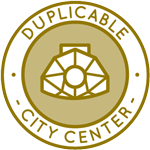 One Community is forwarding measurable sustainable change through a Duplicable and Sustainable City Center that is LEED Platinum certified/Sustainable, can feed 200 people at a time, provide laundry for over 300 people, is beautiful, spacious, and saves resources, money, and space:
One Community is forwarding measurable sustainable change through a Duplicable and Sustainable City Center that is LEED Platinum certified/Sustainable, can feed 200 people at a time, provide laundry for over 300 people, is beautiful, spacious, and saves resources, money, and space:
-
-
- Learn about this building and it’s function: Duplicable City Center Open Source Hub
-
The core team began updating the website with the new Highest Good energy rollout details for the landing party of 10-20 people. You can see some of these updates here.
The core team also updated the floor plan images and added the most recent cost analysis details to the open source City Center Kitchen page, as shown here.
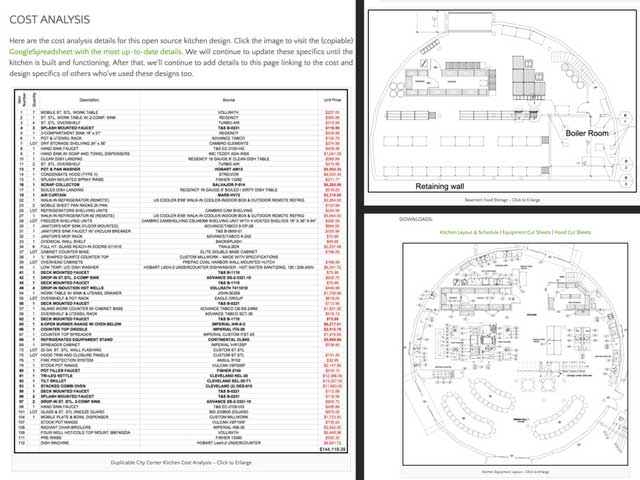
Measurable Sustainable Change – Recent Cost Analysis Details to City Center Kitchen – Click to Visit
Falgun Patel (Mechanical Engineer) completed his 8th week continuing to review, run calculations, and update the specifics of the remote-energy setup plan for the Highest Good energy page. This week’s focus, as shown here, was updating the narrative for the 20-50 and 50-100 waves of volunteers.
Oruba Rabie (Ph.D, PE, and Civil Engineer) also continued working on the City Center structural engineering AutoCAD and SAP2000 models corrections, fixing them in SAP2000 and making notes like the ones shown here for corrections needed in AutoCAD.
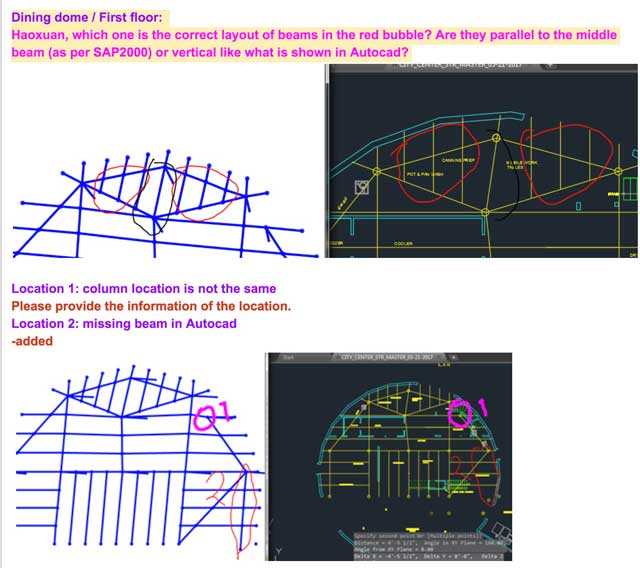
Measurable Sustainable Change – Continued Work – City Center Structural Engineering – Click for Page
And Jin Yu (Structural Engineering Designer) also continued her work on the concrete foundation design and tutorial details for the Duplicable City Center. What you see here is a summary of several weeks of work updating the related AutoCAD drawings.
HIGHEST GOOD FOOD PROGRESS
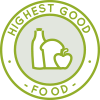 One Community is forwarding measurable sustainable change through Highest Good food that is more diverse, more nutritious, locally grown and sustainable, and part of our open source botanical garden model to support and share bio-diversity:
One Community is forwarding measurable sustainable change through Highest Good food that is more diverse, more nutritious, locally grown and sustainable, and part of our open source botanical garden model to support and share bio-diversity:
-
-
- Learn about the structures: Hoop House Hub | Aquapini & Walipini Open Source Hub
- See what we’ll be growing: Gardens & Hoop Houses | Large-scale Structures | Food Forest | TA
-
This week, the core team continued researching and organizing, and added 10 more countries’ nutrition guidelines to the resources chart for our Food Self-sufficiency Transition Plan and Sustainable Food Nutrition Calculations page, as you see here.
This week, the core team created and added to the Aquapini and Walipini section of the site the two new images here that show the shared dimensions of all 6 of these structures.
HIGHEST GOOD EDUCATION PROGRESS
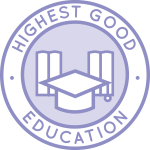 One Community is forwarding measurable sustainable change through Highest Good education that is for all ages, applicable in any environment, adaptable to individual needs, far exceeds traditional education standards, and more fun for both the teachers and the students:
One Community is forwarding measurable sustainable change through Highest Good education that is for all ages, applicable in any environment, adaptable to individual needs, far exceeds traditional education standards, and more fun for both the teachers and the students:
-
-
- Learn about the components: Education open source hub
- Learn how the components work together: How to use the Education for Life Program
-
This week, the core team continued building the education Assessment Format open source page and tutorial. This week we finished the Helpful Evaluation Tips and Tools section, by adding remaining details to 3 components within it, as shown here.
HIGHEST GOOD SOCIETY PROGRESS
 One Community is forwarding measurable sustainable change through a Highest Good society approach to living that is founded on fulfilled living, the study of meeting human needs, Community, and making a difference in the world:
One Community is forwarding measurable sustainable change through a Highest Good society approach to living that is founded on fulfilled living, the study of meeting human needs, Community, and making a difference in the world:
-
-
- Read the Highest Good society overview: Highest Good Society
- Learn about the model for fulfilled living and sharing: A Day in the Life
- Learn about the 4 economic models: RBE | For-profit | Non-profit | Entrepreneurship
- Learn about our open source community collaboration and management software: The Highest Good Network
-
The core team and Ashwin Patil (Web Developer) continued with edits and updates to the Highest Good society search engine, integrating changes and finding additional areas needing to be fixed. The search engine is now 95% complete.
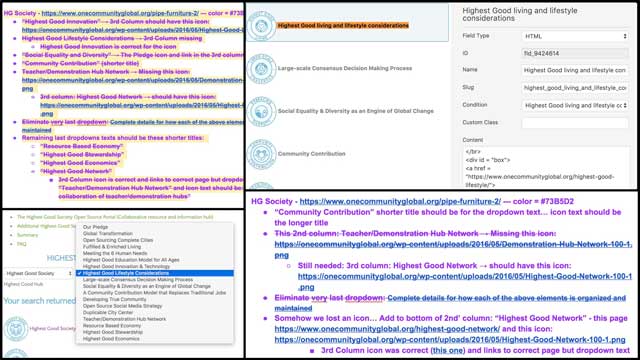
Measurable Sustainable Change – Edits, Updates – Highest Good Society Search Engine – Click to Visit
AND WE PRODUCED THIS WEEKLY UPDATES BLOG – CLICK HERE TO SUBSCRIBE
FOLLOW ONE COMMUNITY’S PROGRESS (click icons for our pages)
INVESTOR PAGES
GET INVOLVED
CONSULTANTS ● WAYS ANYONE CAN HELP ● MEMBERSHIP
CLICK HERE FOR ALL PAST UPDATES
WHAT ONE COMMUNITY IS CREATING
One Community is creating a place to grow together and change the world together thereby Creating a Better World and achieving Measurable Sustainable Change. We are creating a space that helps each other live in integrity with each other and the planet as we strive to be the greatest versions of ourselves. We do this by harmoniously respecting each other, nature, and the rest of our one shared planet.
Our goal is to demonstrate what we feel is the most sustainable, healthy, and fun environment we can create. A place based on compassion, kindness, and collaboration. This replicable community will serve as an example for what is possible.
Throughout our design process we are open sourcing and free-sharing everything needed for construction and replication. This includes what we call “Highest Good” approaches to food, energy, housing, education, for-profit and non-profit economics design, social architecture, fulfilled living, stewardship practices and more. We are creating these resources for implementation as individual components or complete developments called teacher/demonstration hubs. These hubs will help launch additional hubs as awareness and knowledge grow.
BUILDING THE FIRST OF MANY
One Community will be the first teacher/demonstration hub. It will function as an experiential-learning model that facilitates mass participation to address humanity’s most pressing challenges through: A replicable model for expansion, building seven self-sufficient village/city prototypes, becoming the world leader in open-source sustainability solutions, and evolving and expanding ALL aspects of sustainable living.
WHY ONE COMMUNITY IS CREATING THIS
The One Community self-replicating model is capable of creating a sustainable planet within 30 years. We will achieve this by establishing successful teacher/demonstration hubs on every continent. Villages include designs appropriate for each of the five main types of climates. They also include options for even the most challenged economies. These hubs will collaborate with one another, share ideas, resources, and work together as a network to heal the planet. They will also transform the global lifestyle to a more enjoyable, fulfilling, healthy, and sustainable one.
The specifics of how One Community is accomplishing this can be found on the One Community Solution Model to Create Solution-creating Models Page. Research supporting and showing the benefits of a model like this can be found on our Research and Resources Articles Archive.
Even if we don’t achieve our ultimate goal of global transformation, a self-replicating teacher/demonstration model like this will take a relatively short period of time to positively affect millions while inspiring millions more. For One Community residents (the Pioneer Team), the idea of creating and sharing the social and recreational experience with visitors is also fun, exciting, fulfilling, and an additional reason why we are creating this.
SUMMARY
One Community sees the issues of the world as interdependent and interconnected. To address them simultaneously, we are open-source blueprinting a more advanced standard of living by designing holistic, environmentally-regenerative, self-sustaining, adaptable solutions for all areas of sustainability and Creating a Better World . We will model these within a comprehensive “village/city” which will be built in the southwestern U.S. This teacher/demonstration hub will be a place people can experience a new way of living and then replicate it with our open source blueprints: creating a model solution that creates additional solution-creating models.
 One Community
One Community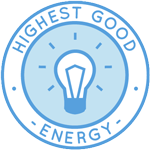

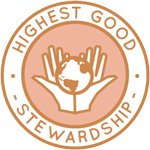
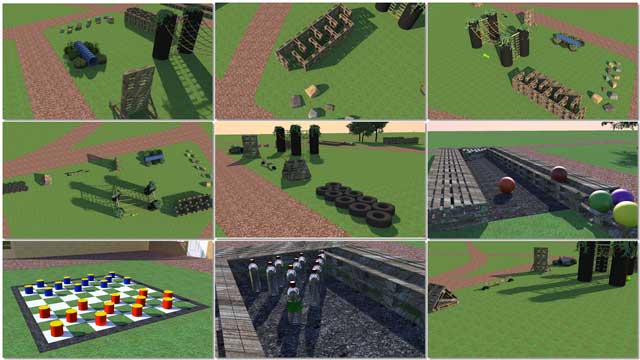
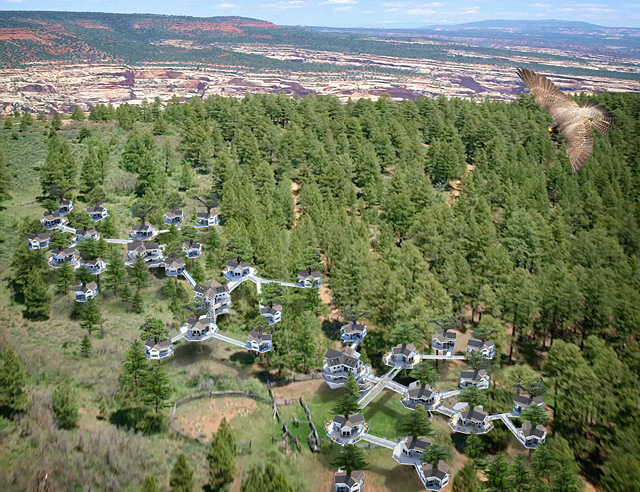
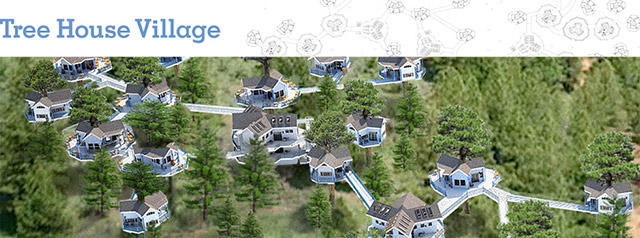
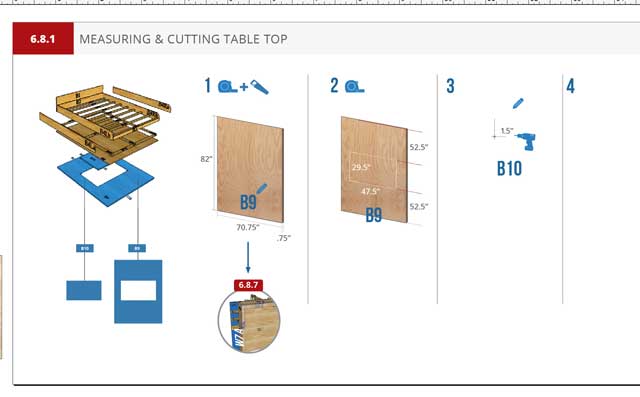
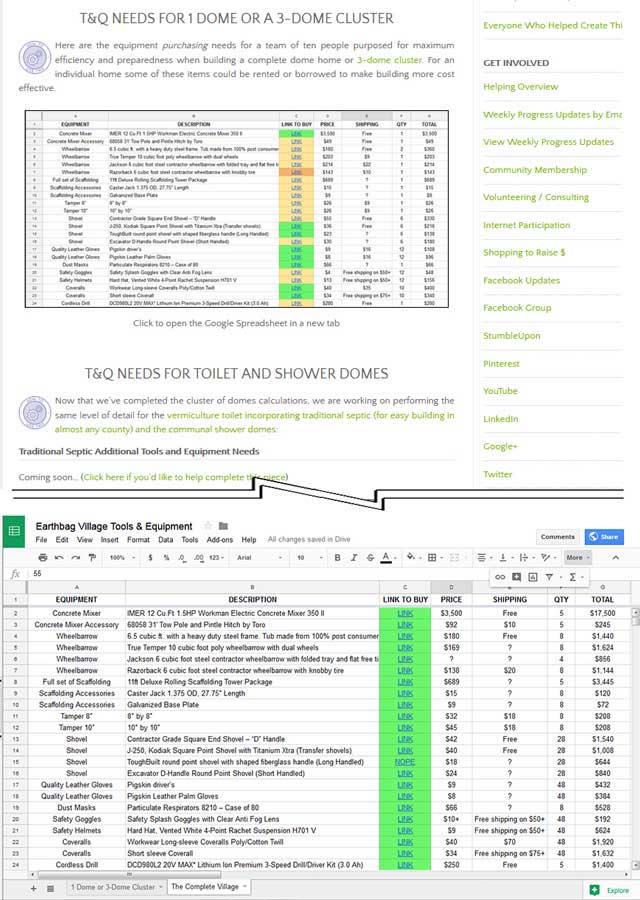
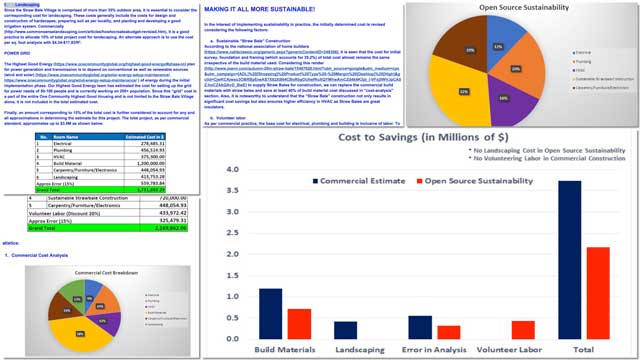
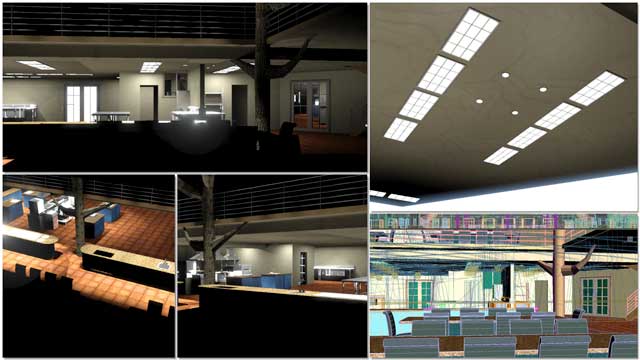
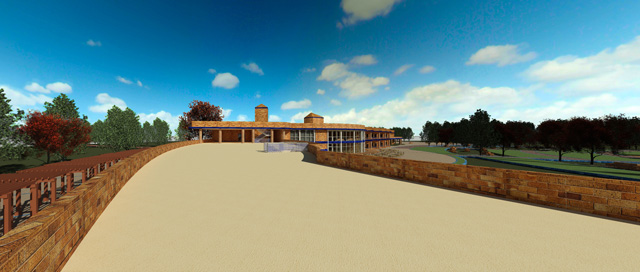
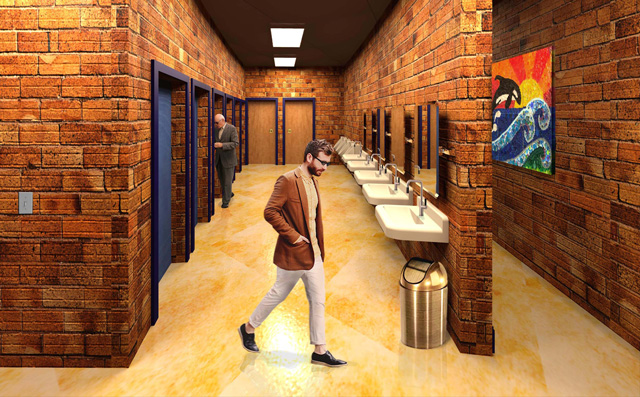
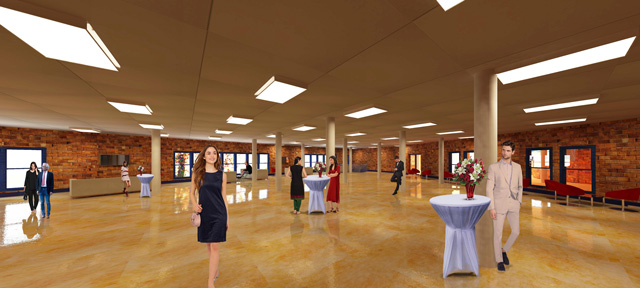
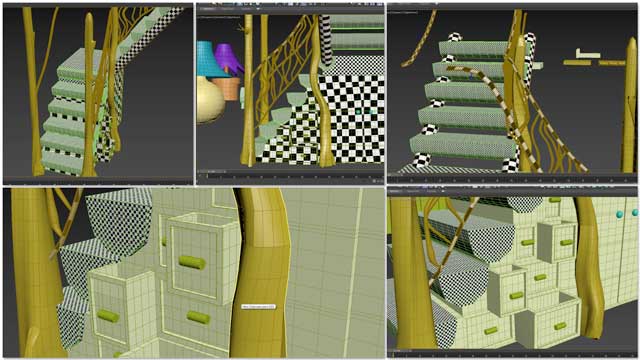
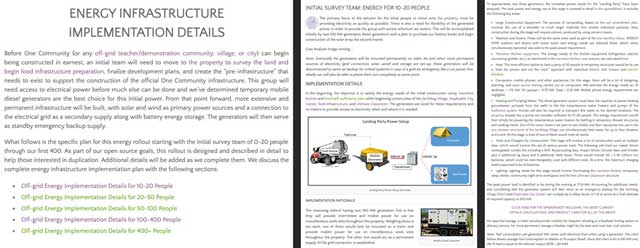
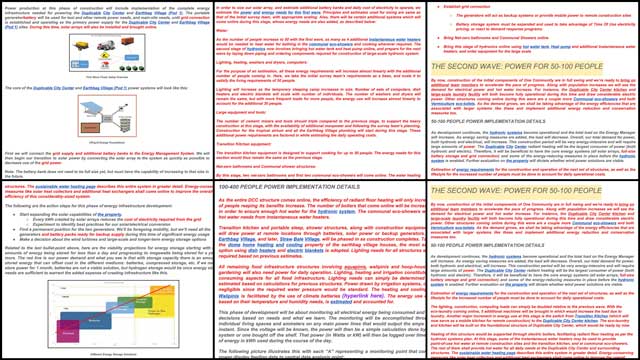
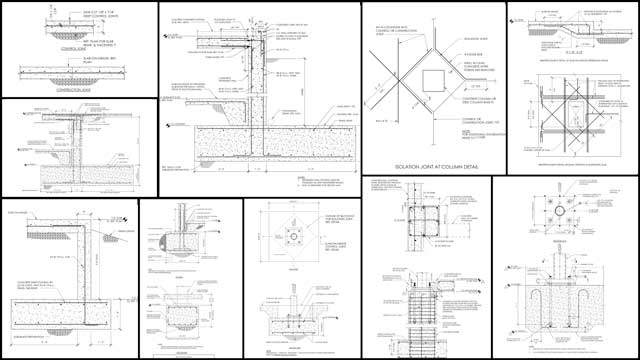
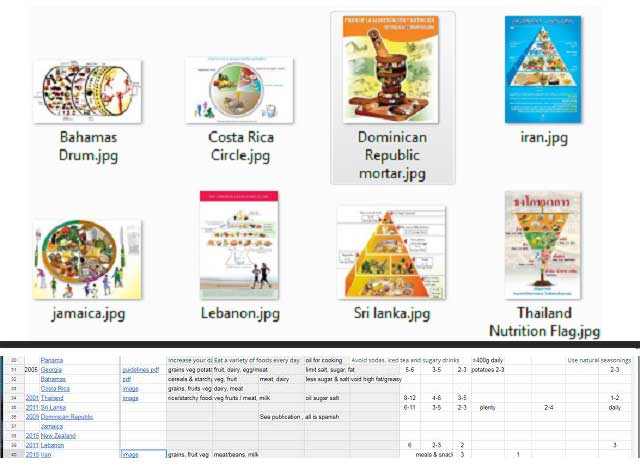
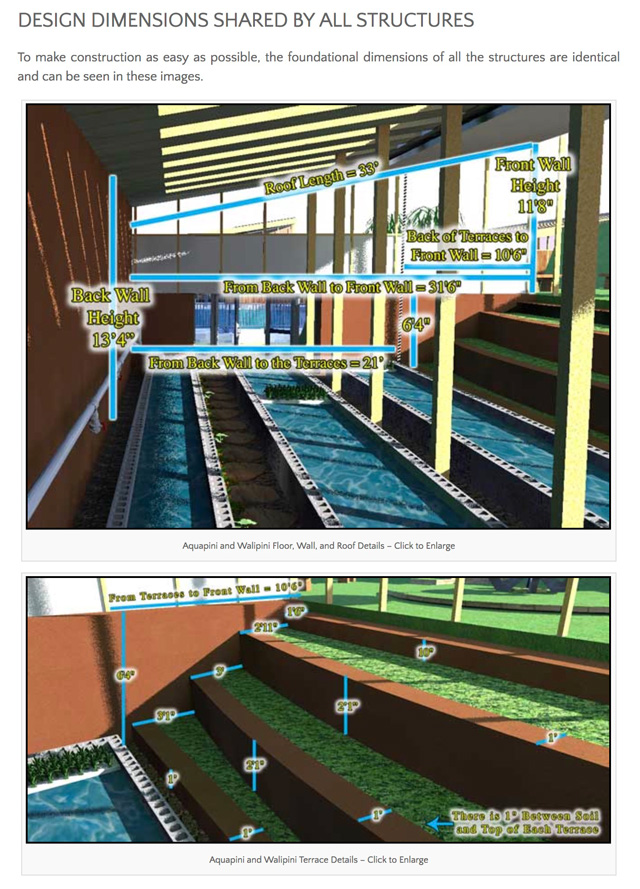
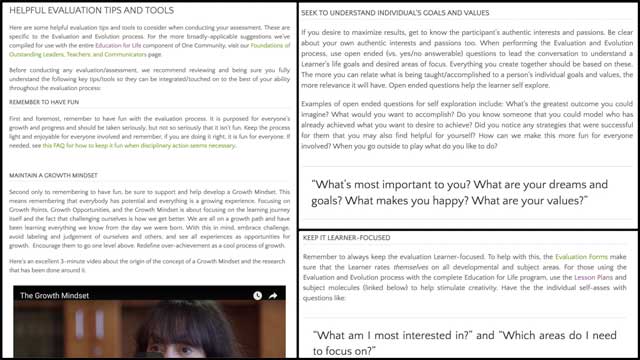
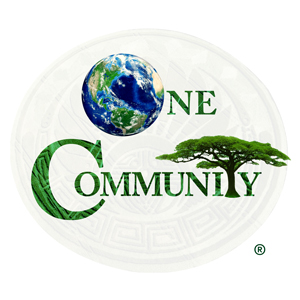


Connect with One Community